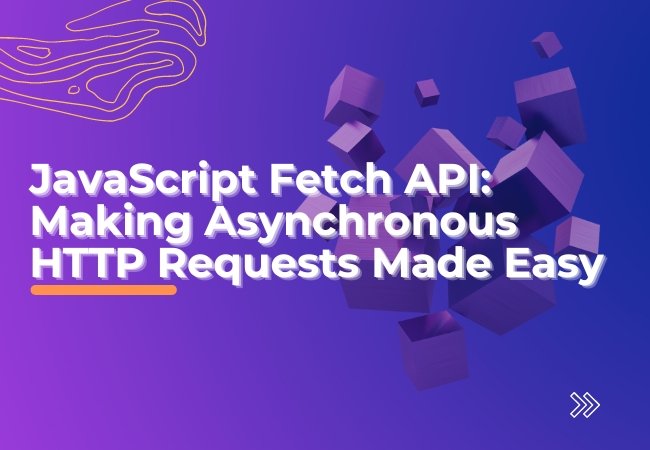Contents
What is the Fetch API?
Introduced in ES6 (ECMAScript 2015), the Fetch API provides a modern and standardized way to perform HTTP requests asynchronously.
It offers a more straightforward and flexible alternative to traditional methods like XMLHttpRequest. The Fetch API is built on promises, making it easier to write clean and concise code for managing asynchronous operations.
Making a Simple GET Request
To initiate a GET request using the Fetch API, the basic syntax is as follows:
fetch(url)
.then(response => response.json())
.then(data => {
// Process the received data
})
.catch(error => {
// Handle any errors
});
The fetch function takes the URL of the resource you want to fetch as an argument. It returns a promise that resolves to the Response object. To extract the data from the response, we use the .json() method, which returns a new promise that resolves to the parsed JSON data.
Handling Errors
It’s important to handle any errors that might occur during the request.
The Fetch API provides the .catch() method to catch any network errors or rejections of the promise chain. This allows you to gracefully handle errors and provide meaningful feedback to users.
Sending Data with POST
To send data to a server using a POST request, you can pass an options object as the second argument to the fetch() function. Here’s an example:
const url = 'https://api.example.com/data';
const data = { username: 'JohnDoe', email: 'johndoe@example.com' };
fetch(url, {
method: 'POST',
headers: {
'Content-Type': 'application/json',
},
body: JSON.stringify(data),
})
.then(response => response.json())
.then(data => {
// Handle the response data
})
.catch(error => {
// Handle any errors
});
In the example above, we provide the necessary options within the second argument to indicate that we want to perform a POST request. We also set the Content-Type header to 'application/json' since we’re sending JSON data. The JSON.stringify() method converts the data object into a JSON string before sending it to the server.
Customizing Headers and Handling Other Request Types
The Fetch API allows you to customize headers, specify different request types (GET, POST, PUT, DELETE, etc.), and handle other request-related configurations.
By providing additional options in the fetch request, you can tailor your requests to suit specific API requirements. For example, you can set authorization headers, control caching behavior, or handle cookies.
Conclusion
The JavaScript Fetch API has revolutionized how we handle asynchronous HTTP requests in modern web development. Its simplicity and powerful features make it a valuable tool for interacting with APIs and fetching data from servers.
With its promises-based approach and intuitive syntax, the Fetch API offers a more elegant and readable solution for performing asynchronous network operations.
Alternatively, developers can use the Axios library to make asynchronous HTTP requests in JavaScript. Axios is a popular and widely adopted library that provides a simple and elegant API for handling HTTP requests.
With Axios, you can easily send GET, POST, PUT, DELETE, and other request types, customize headers, handle request and response interceptors, and handle errors effectively. It offers features like automatic request cancellation, built-in support for JSON data serialization, and browser compatibility.
Axios simplifies the process of making HTTP requests and provides a comprehensive set of functionalities that can streamline the data exchange process between web applications and servers.
By mastering this essential feature, you can create responsive web applications that efficiently communicate with servers, enhancing user experiences and interactivity.





0 Comments